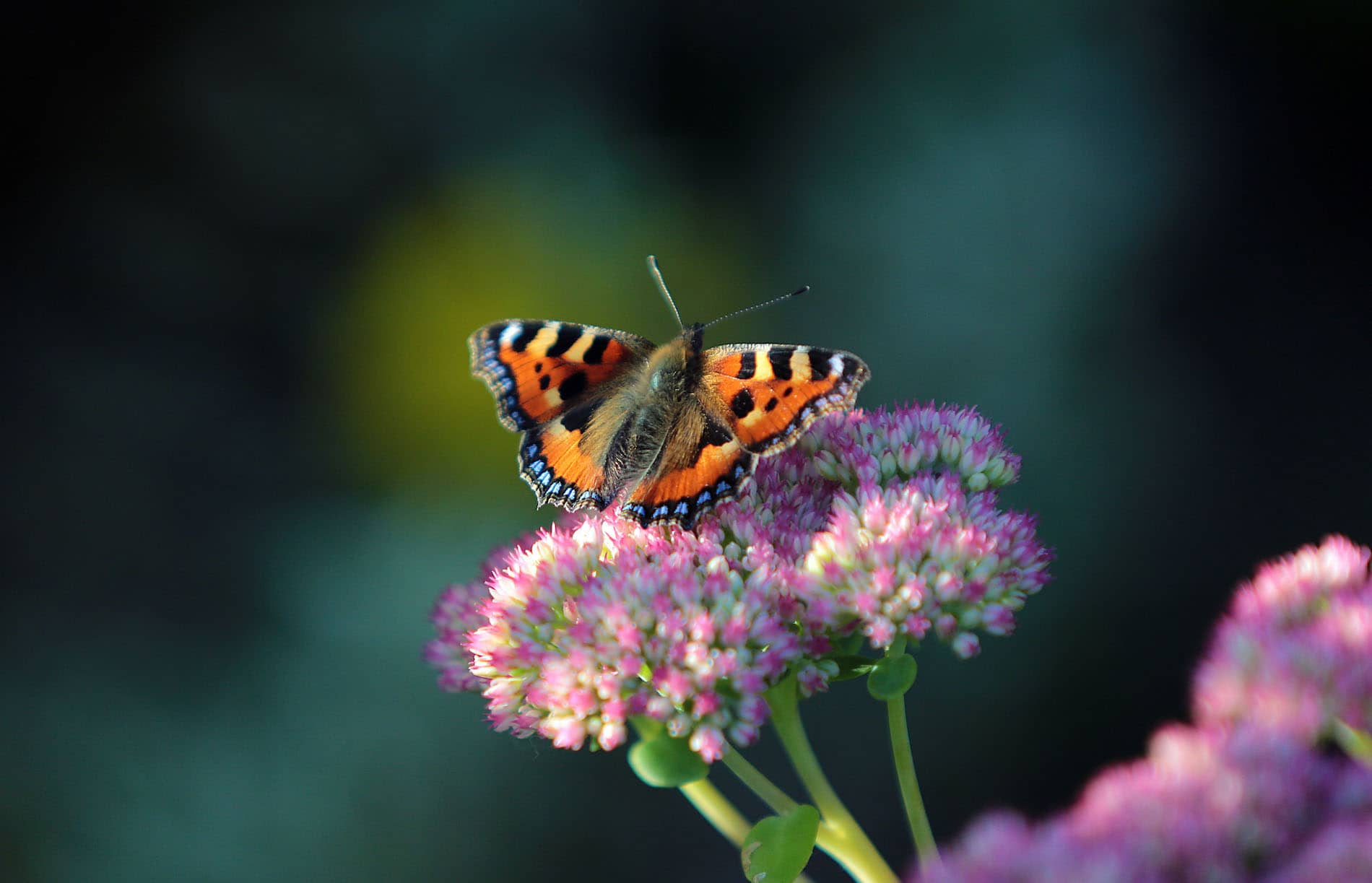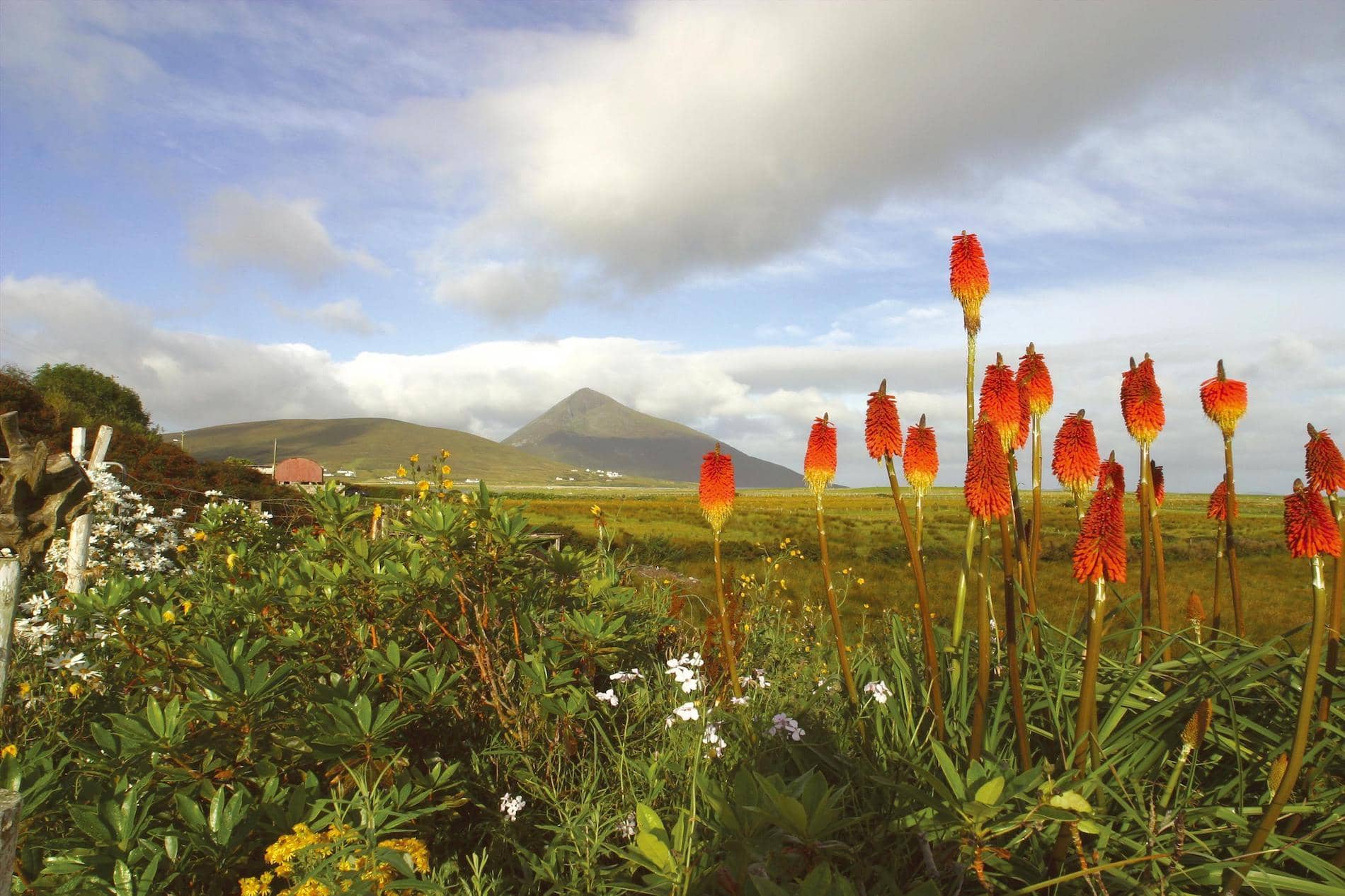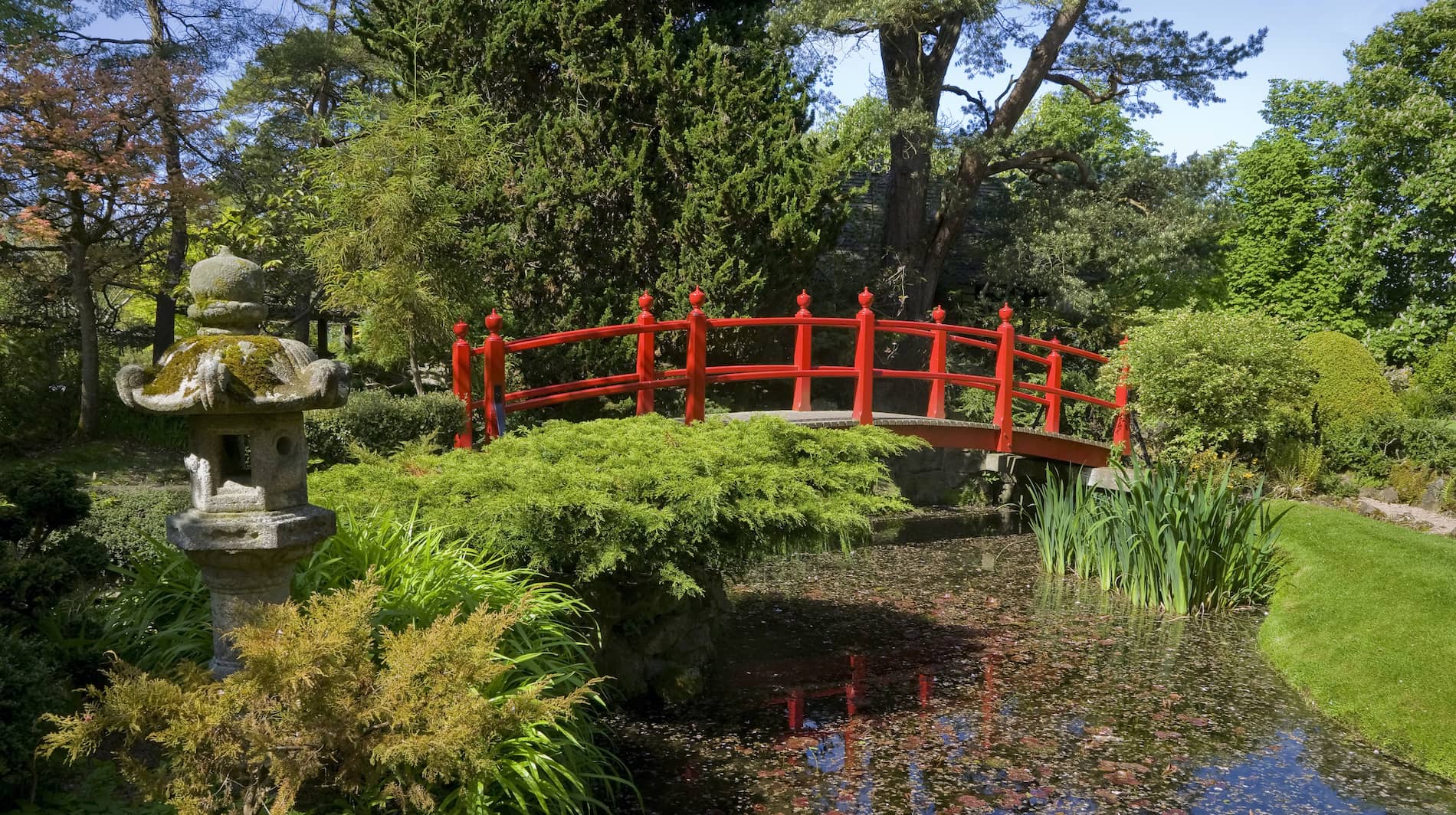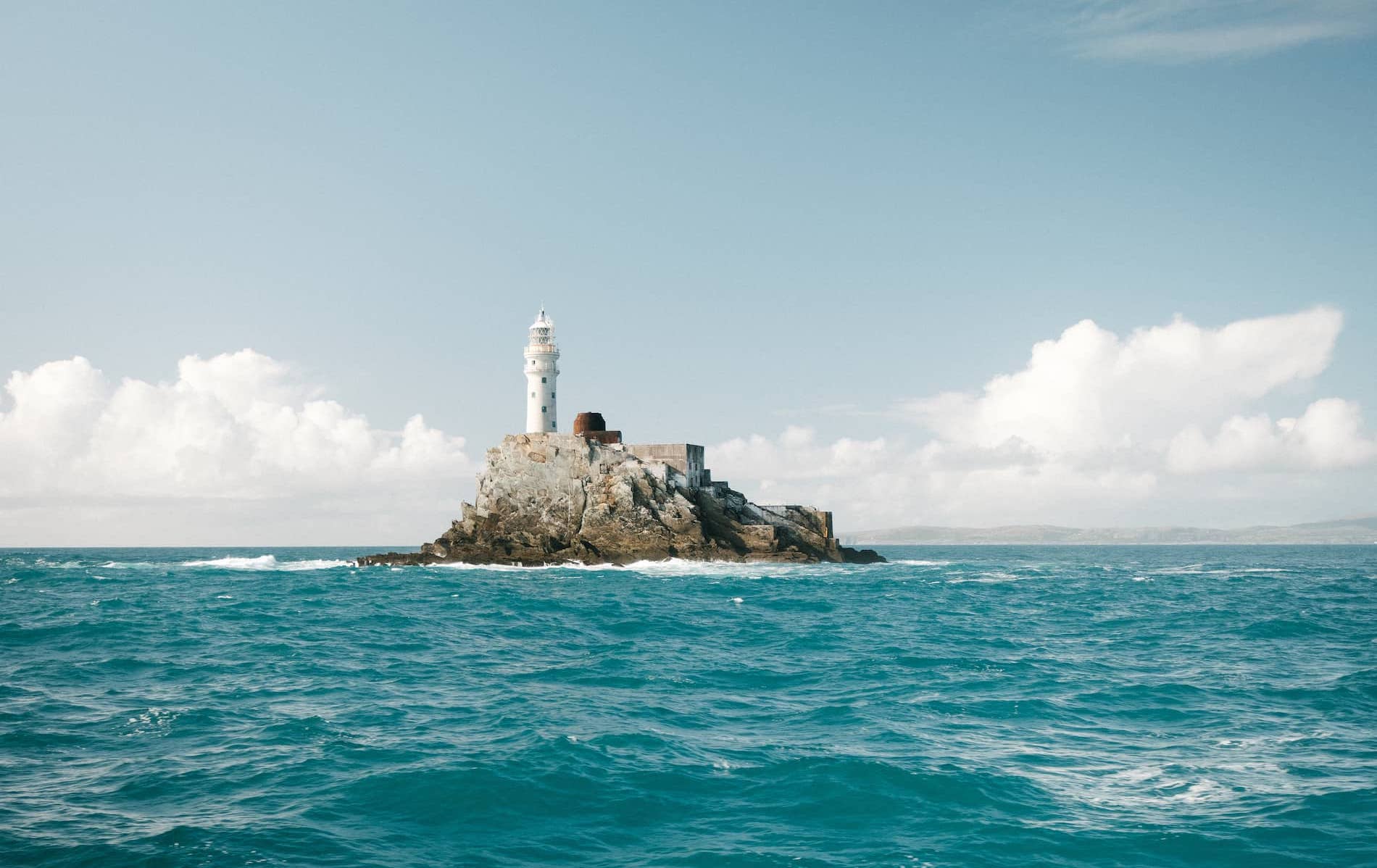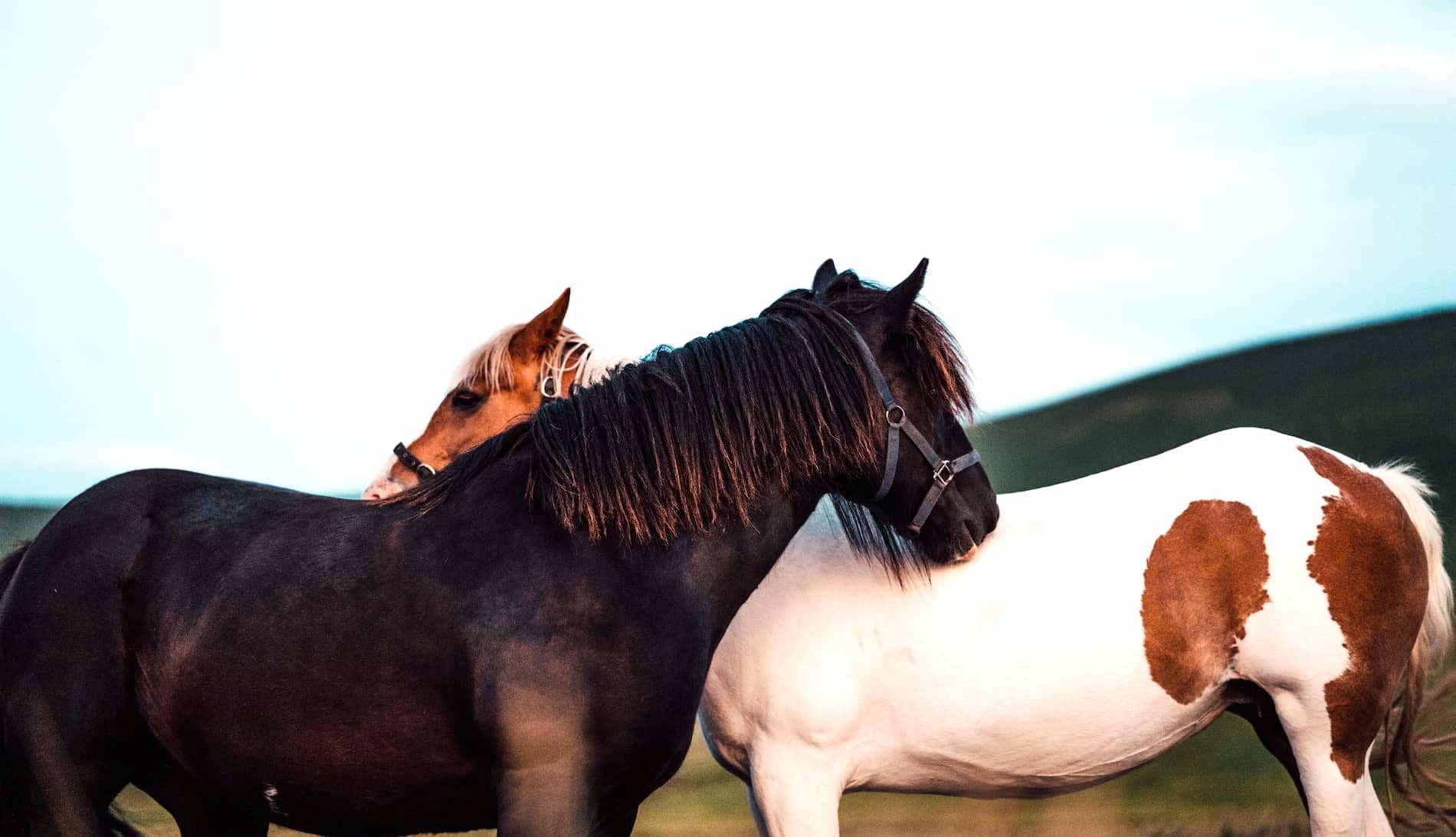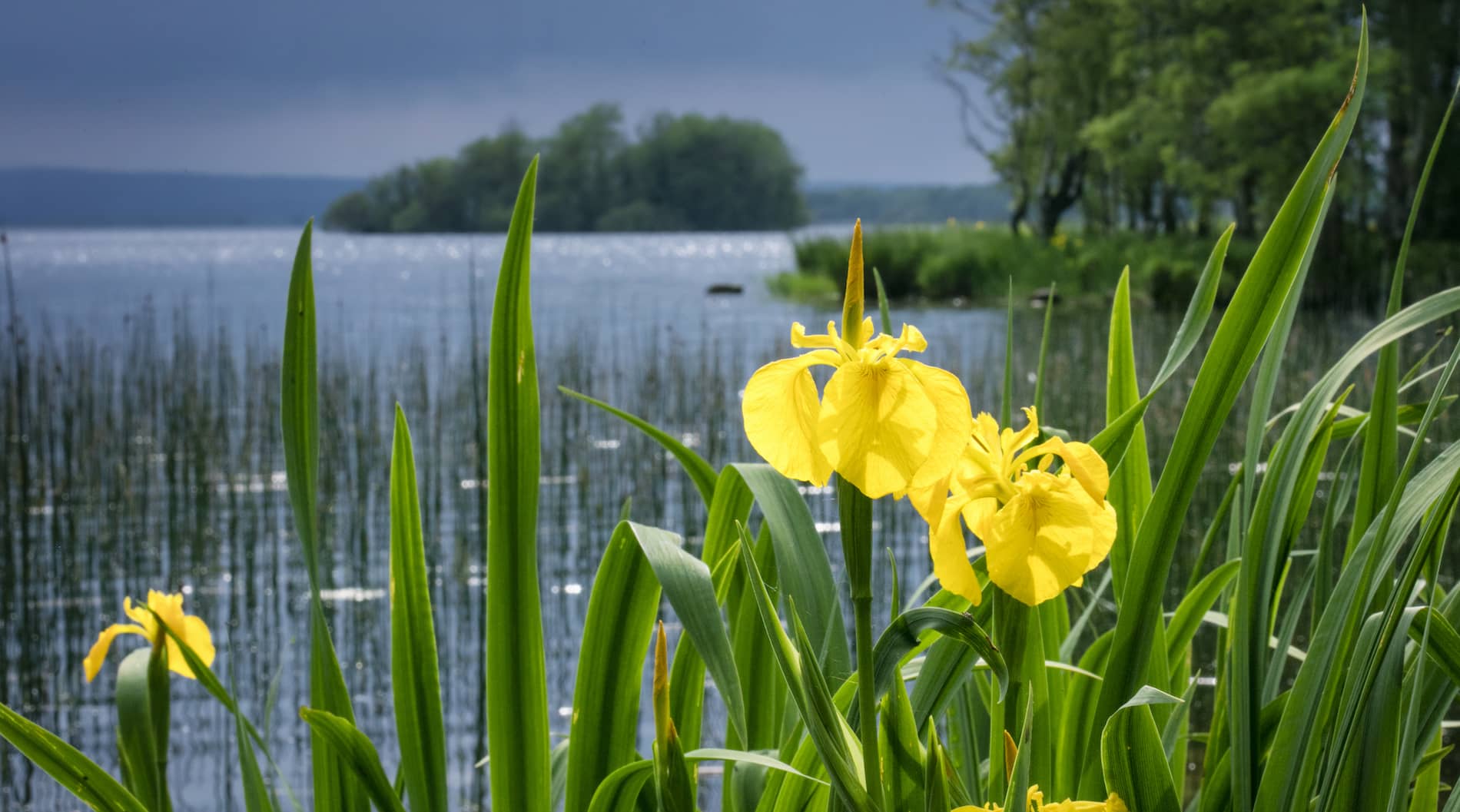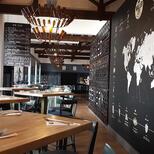

Ireland's undiscovered north west in 72 hours without a car
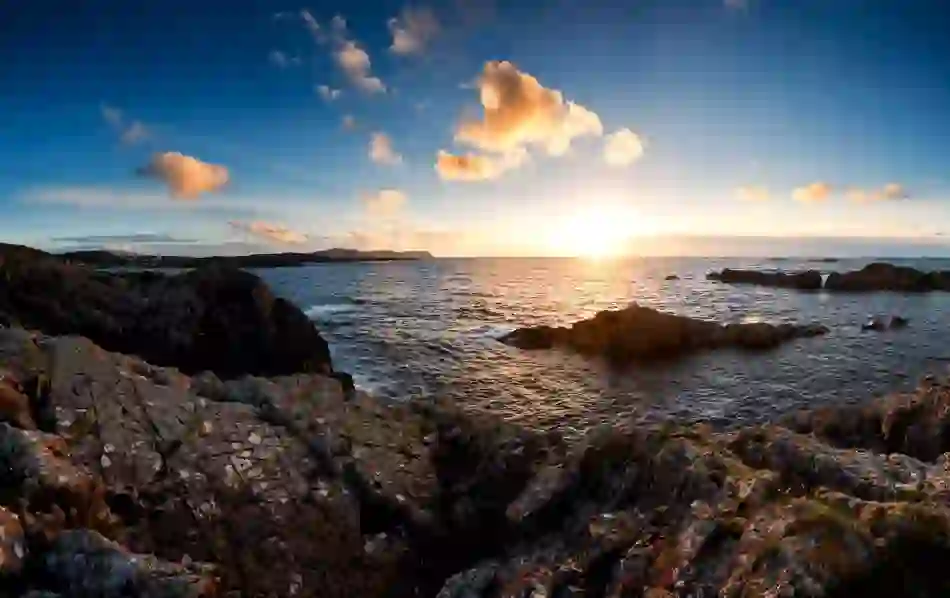


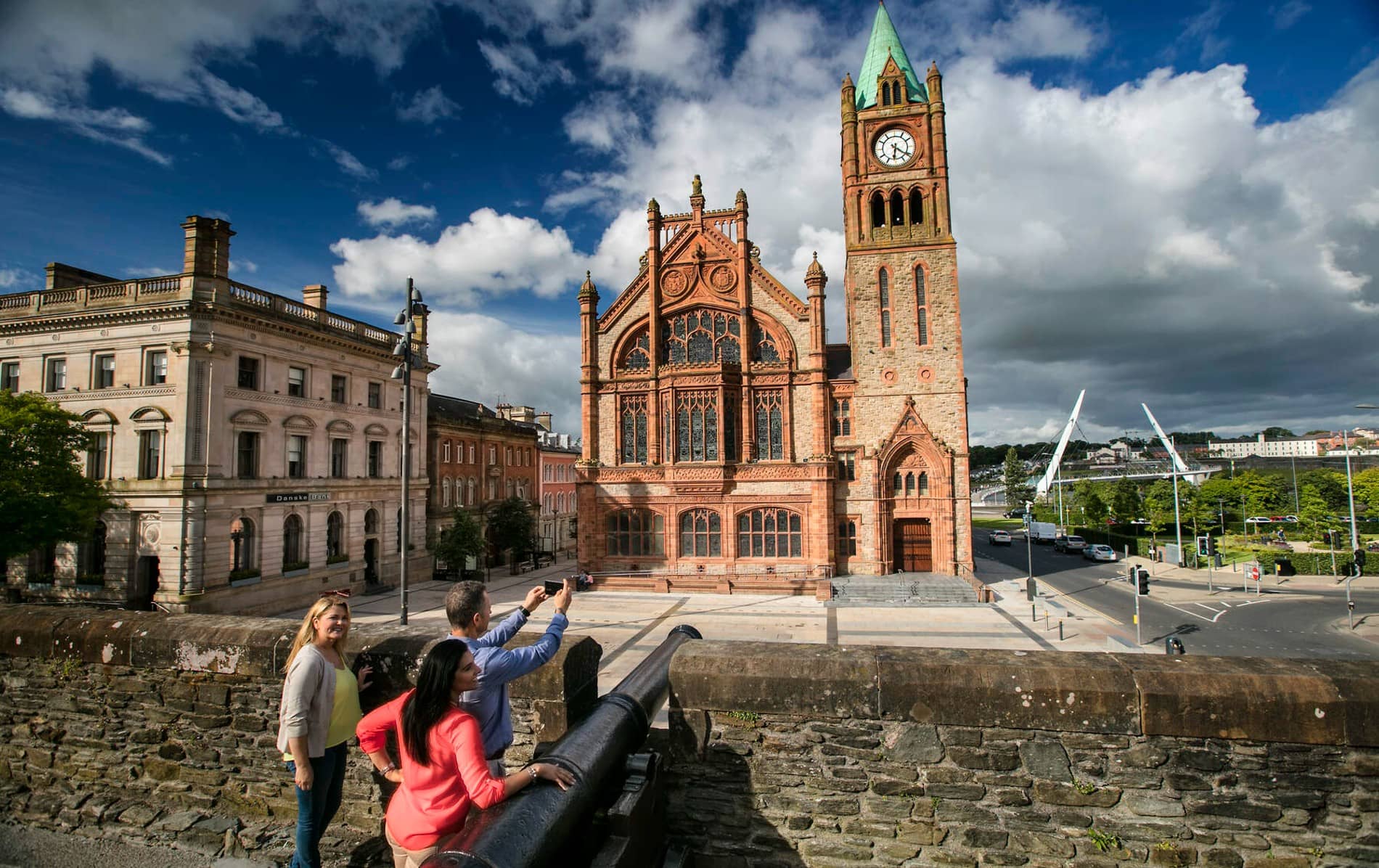


The undiscovered north west in 72 hours without a car
Ditch the car and enjoy the sights and secrets of Donegal and Derry~Londonderry at a slower pace. Direct shuttles run from nearby airports to the centre of Derry~Londonderry. In 72 hours, you can bike, bus, walk or even stand-up paddleboard (SUP) your way around the undiscovered north west. Intrigued? Here’s what you’ll see …

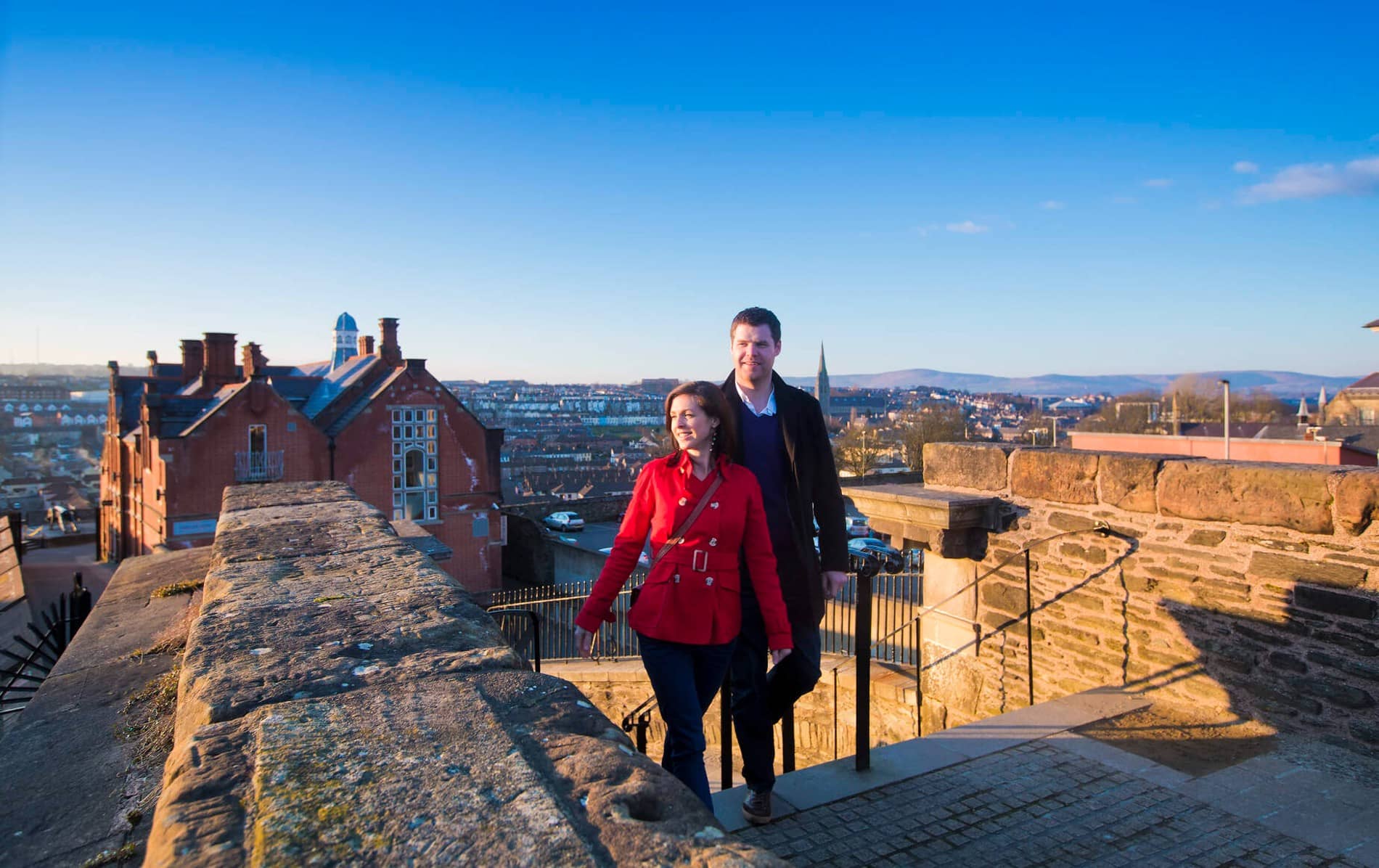
Day 1
A strollable city, Derry~Londonderry is alive with modern culture and hallowed history, making it a joy to amble around.
Explore Day 1If walls could talk
Derry~Londonderry Walls

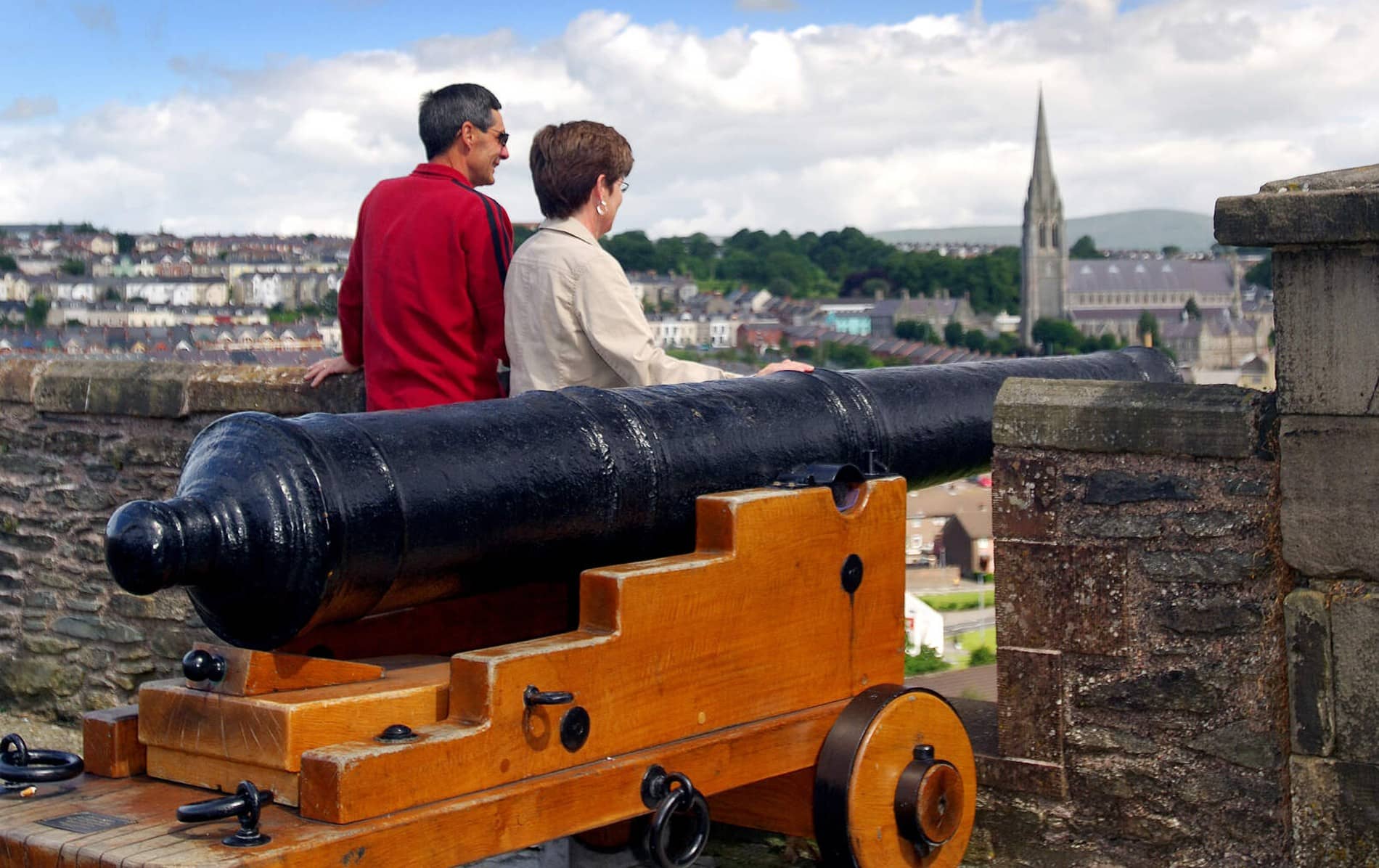
For 400 years, its historic walls have made Derry~Londonderry stand apart. A mile long and as thick as 35 feet in places, trailing their path on foot is a great way to see the city from every perspective and to catch sight of its 24 hulking black cannons. Once the pride of an imposing arsenal, today they stand in contrast with a city that embodies peace — a peace that's been hard-won. Our advice? Join the Unlocking the Walled City tour with guides who mix humour and history as they bring you from the city’s 6th century foundations to the present day.
Derry~Londonderry's story spans four centuries of battle, all faithfully recounted in its three main museums, which sit in a triangle no more than 500 yards from one another. To the south, the Siege Museum recounts the infamous victory of 1689, when 30,000 city-dwellers kept the invading forces of King James II at bay, ultimately defeating them after 105 days. In the Tower Museum, you can pore over relics from the Spanish Armada ship that was wrecked off the coast of neighbouring County Donegal in 1588; while the Museum of Free Derry details the personal stories behind the struggle for civil rights, which plagued the city for decades.
If you have more time, at the heart of the Craft Village, Soda & Starch is the perfect place to refuel after a morning's education.
1 km
The jewel in the architectural crown
The Guildhall, Derry~Londonderry

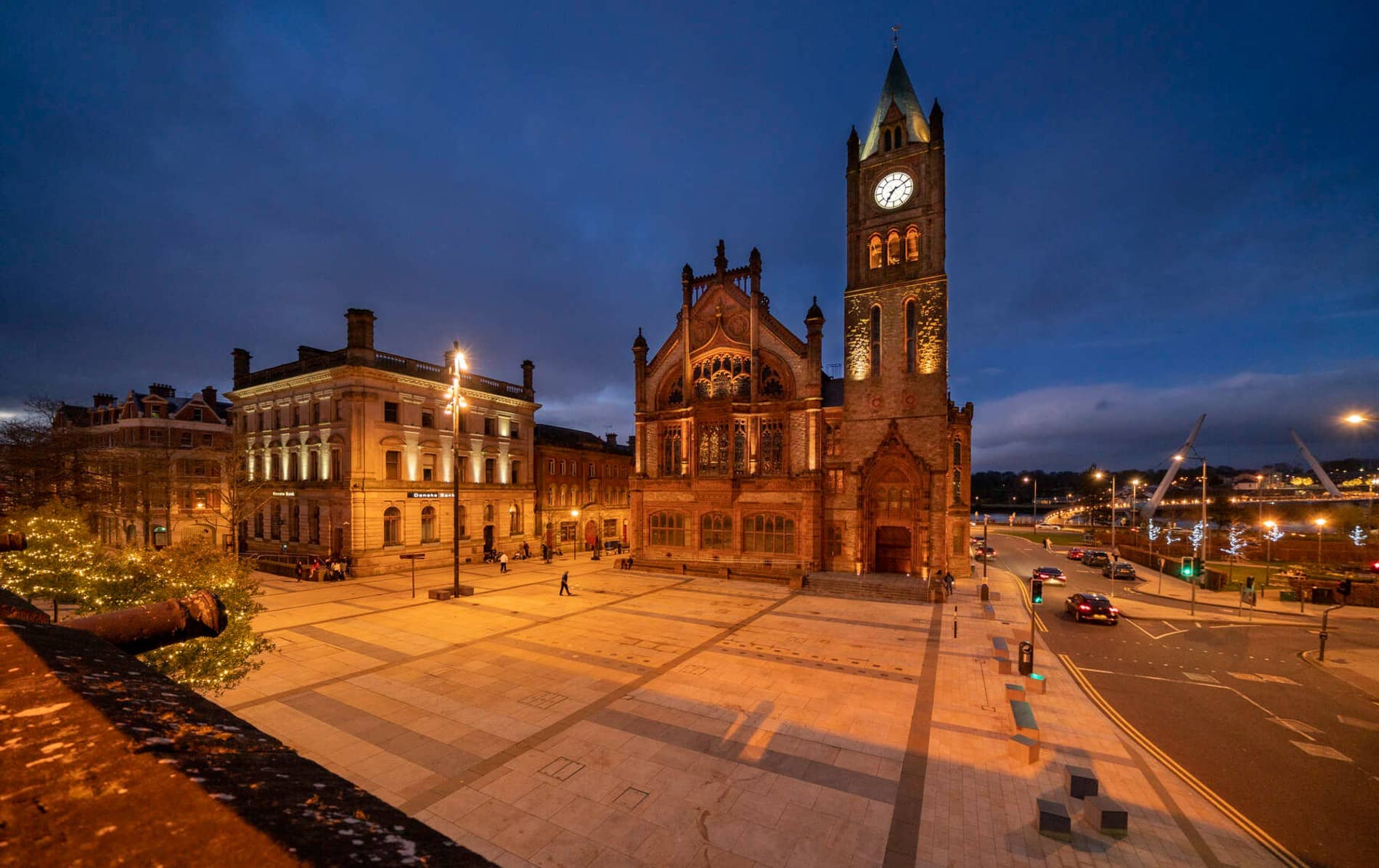
Even if you don't get a chance to step inside, Derry~Londonderry's Guildhall is a sight to behold. Pristine red brick climbing upwards in peaks and curves, ornate technicolour stained glass and a vibrant aqua copper tower roof make this neo-gothic masterpiece one of the finest buildings in the north-west. In fact, its outer face may come second only to its interior, where a magnificent regal pipe organ occupies the entire back wall. Built in 1887, the Guildhall today houses a permanent exhibition on the 17th-century Plantation of Ulster — a must-visit for anyone interested in truly understanding this region's complex history.
If you have more time, pop into St Columb's Cathedral: the first cathedral built on the island of Ireland after the Reformation, it's home to the original locks and keys to the city's gates.
1 km
Culture through the ages
Derry Girls Mural, Badger's Bar

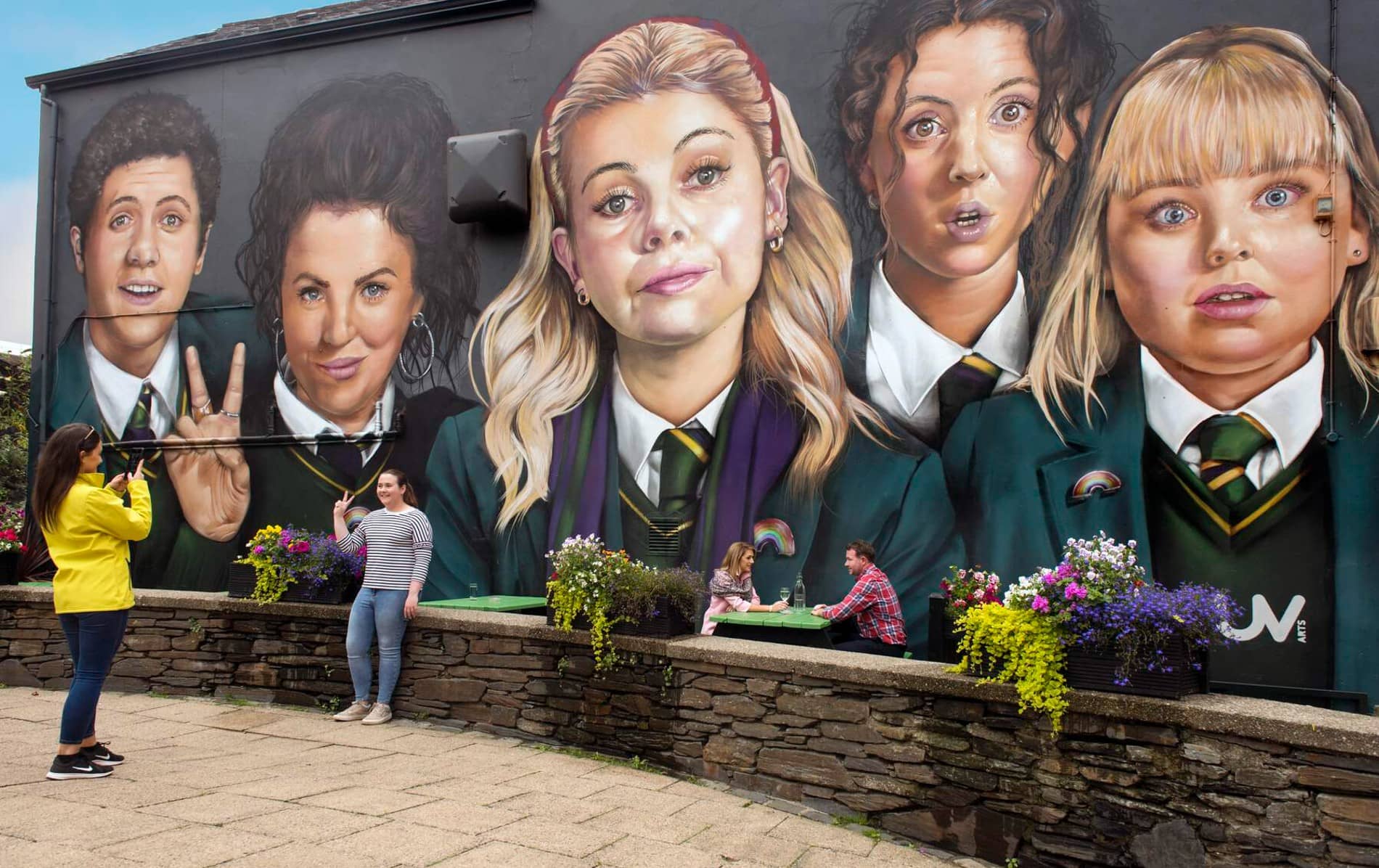
Never before has a TV show captured the heart of a city like Derry Girls. Northern Ireland's most-watched series of all time tells the story of five teenagers growing up in the 1990s, when Derry~Londonderry was experiencing great change, great hardship and great hope for the future. Today, those five fan favourites — Clare, Michelle, Erin, Orla and James—have been immortalised on the gable end of Badger's Bar, continuing a great tradition of murals in Derry~Londonderry. To understand the history behind the show and to see the other murals, join the Bogside History Tour. Here, you’ll find the Bloody Sunday monument and the Free Derry corner, while hearing the history of The Troubles and the unrest that plagued the city for generations.
If you have more time, a fitting way to say goodbye to the gang after three series of fun is the Derry Girls Exhbition at the Tower Museum. Go behind the scenes by exploring set pieces and see costumes, memorabilia and props from the series.
Afterwards, sit down for tea at the Derry Girls Afternoon Tea and Tour. Not only will you get a unique tour of the city to see where series was filmed and local history tidbits, you can fill up on delicacies, such as sausage-roll baps, cones of chips and of course, cream horns. Delicious!
1 km
Let peace reign
The Peace Bridge

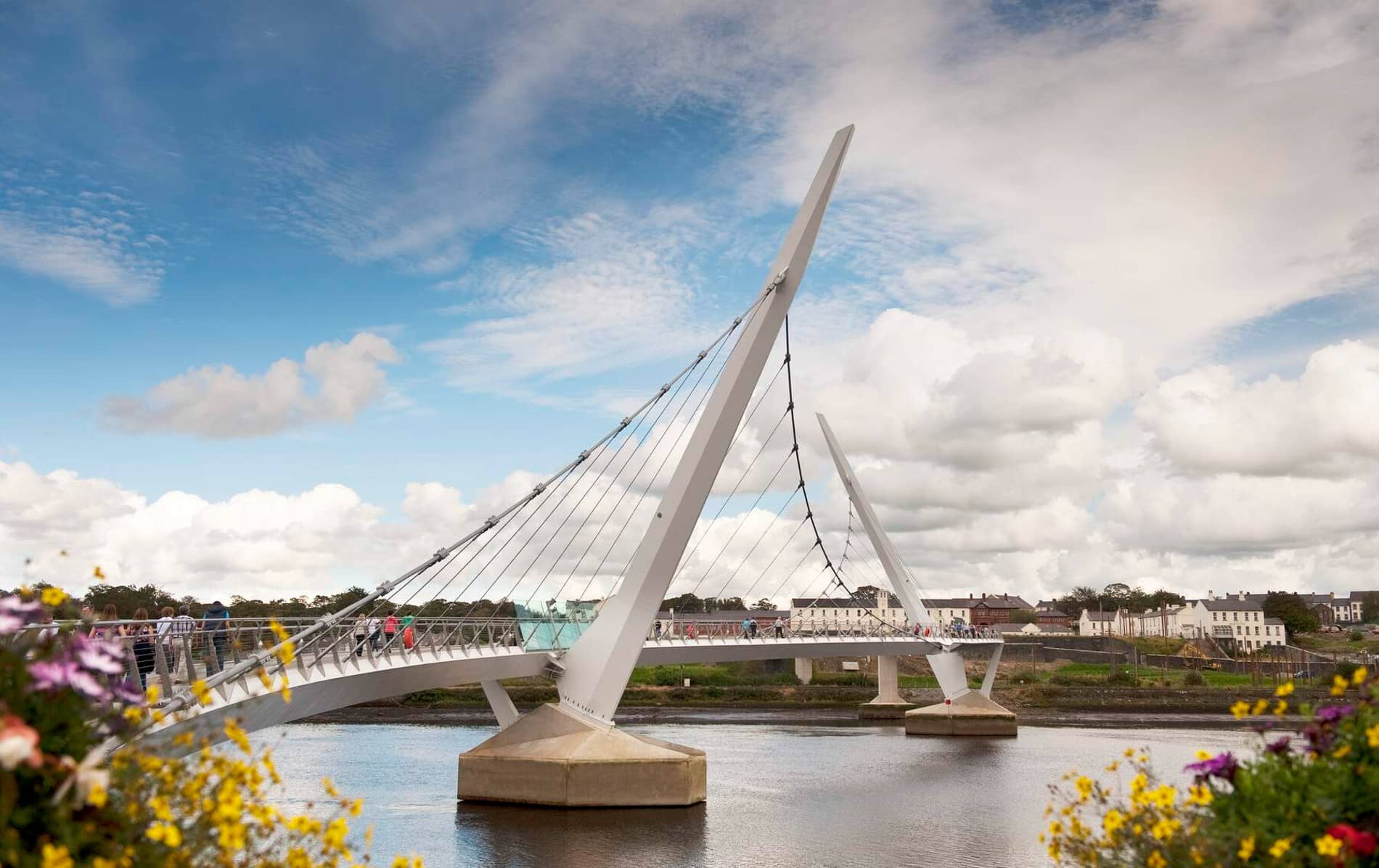
Winding its way across the River Foyle, Derry~Londonderry's Peace Bridge connects so much more than the communities of Waterside to the east and Cityside to the west. Opened in 2011 and designed to literally mirror a handshake across the water, the bridge was built to symbolise the communion of a city that had survived and thrived through times of great division. Loved by the locals ever since, the bridge is open to footfall and cyclists alike and is dotted with sheltered seating areas. As your first day winds down, take a breather, perch right here and reflect on your day as you watch the boats glide beneath you.
If you have more time, after a hearty dinner at the Walled City Brewery, Northern Ireland's only brewery restaurant, head back to any of Derry~Londonderry's fine hotels: the Shipquay Boutique Hotel, City Hotel Derry and Serendipity House B&B are all within walking distance back across the Peace Bridge.
4 km

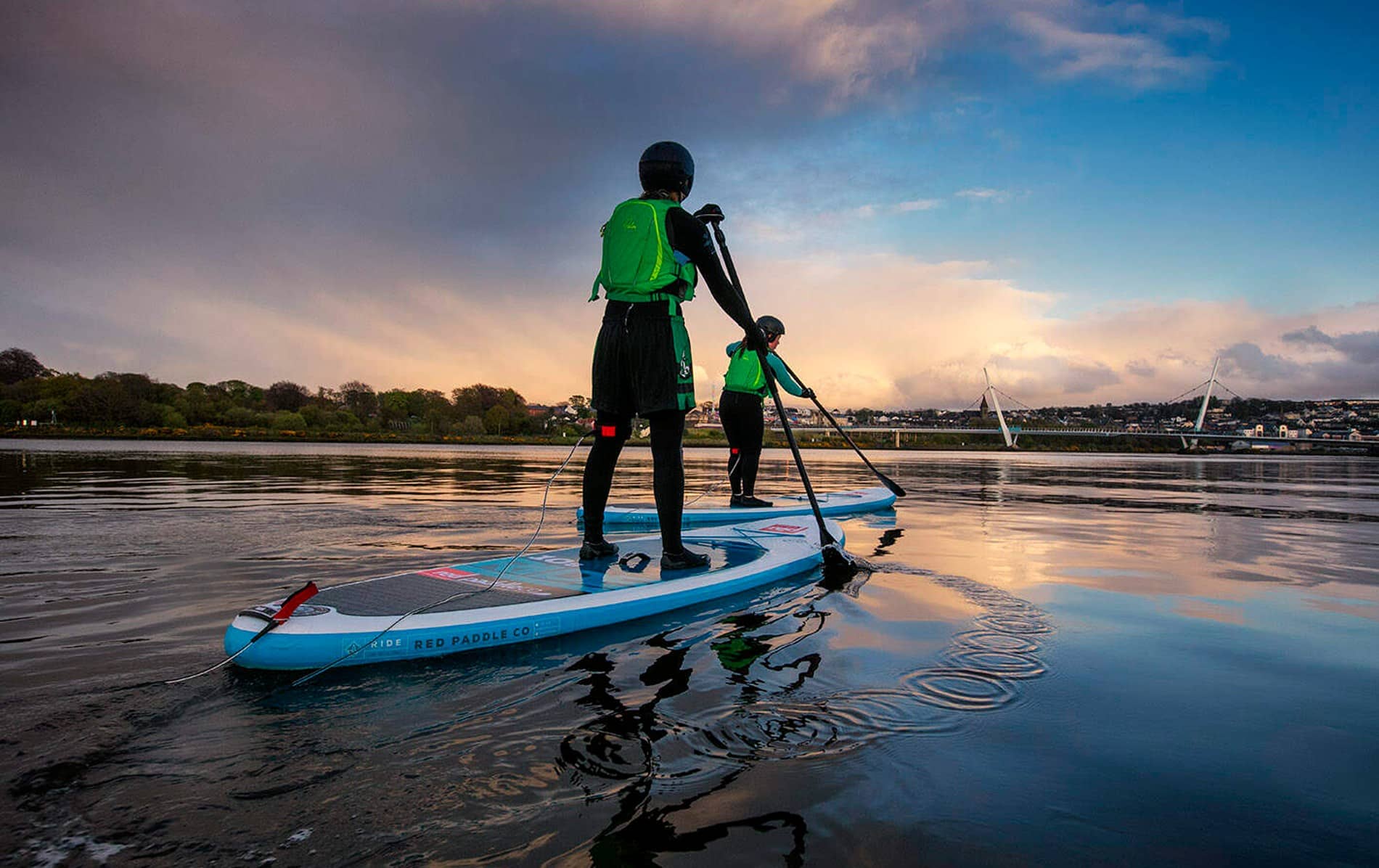
Day 2
Whether staying in the city or heading west to County Donegal, the water will win your heart on your second day in the north west.
Explore Day 2Paddling your way to peace
Far and Wild City Cycle, Derry~Londonderry

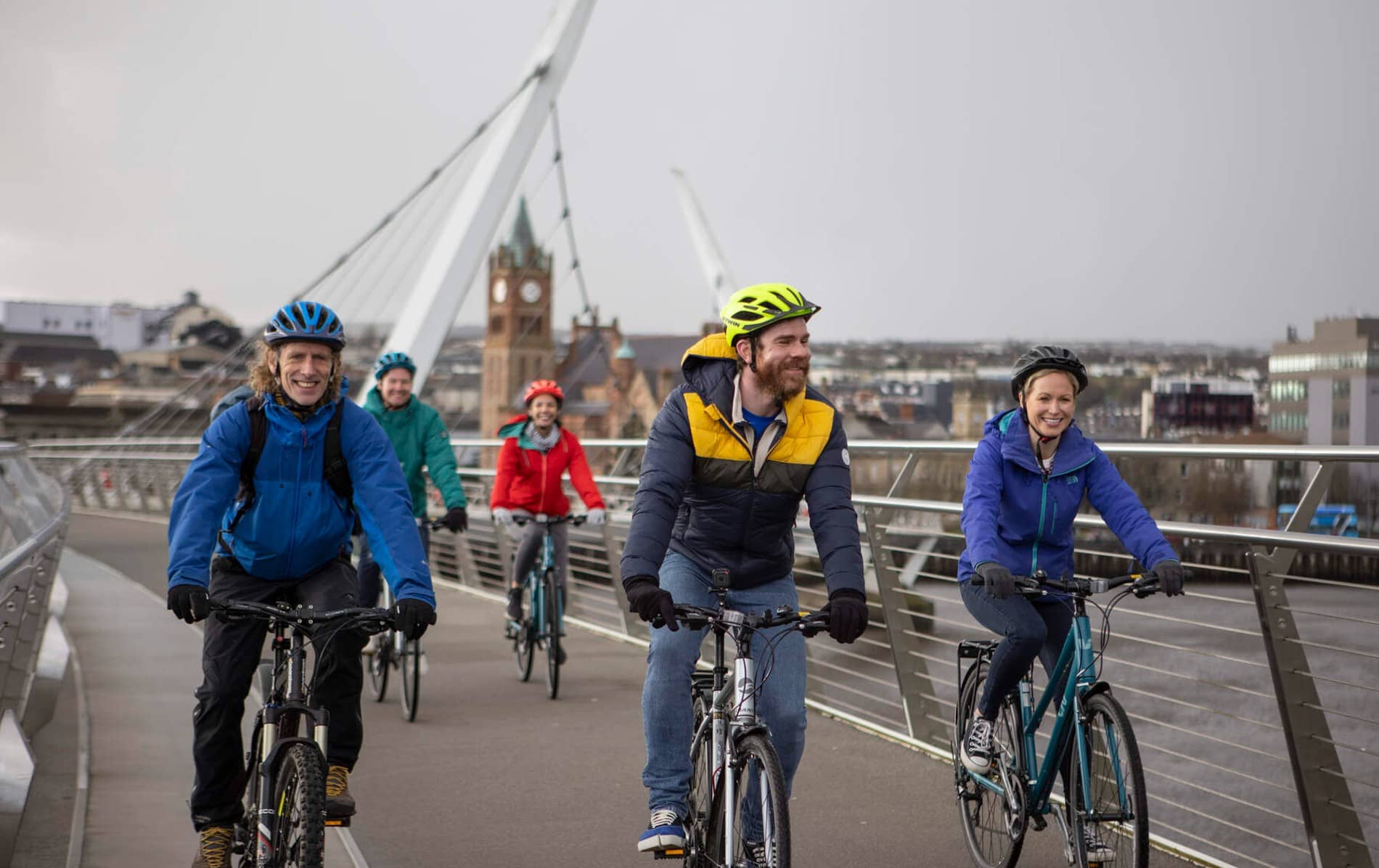
If the view from the Peace Bridge at night time is special — and it is — the only thing that might beat it is the view from the water itself. Stand-up paddleboarding is one of the most leisurely ways to get around Derry~Londonderry, floating along the last stretch of the River Foyle before it meets the ocean.
For something slightly more strenuous, there's the Far & Wild Foodie City Cycle, where you'll spend two hours cycling around the inner city. After all that exercise, you'll be glad of the local produce on hand at eateries like 9ine Hostage Café and The Legenderry Warehouse No 1. Then it's just a few minutes' walk to the bus stop outside the Guildhall, from where McGonagle coaches depart to Donegal at 10 minutes past the hour, every hour, landing in Buncrana just 40 minutes later.
26 km
Was blind, but now I see
Lough Swilly, County Donegal

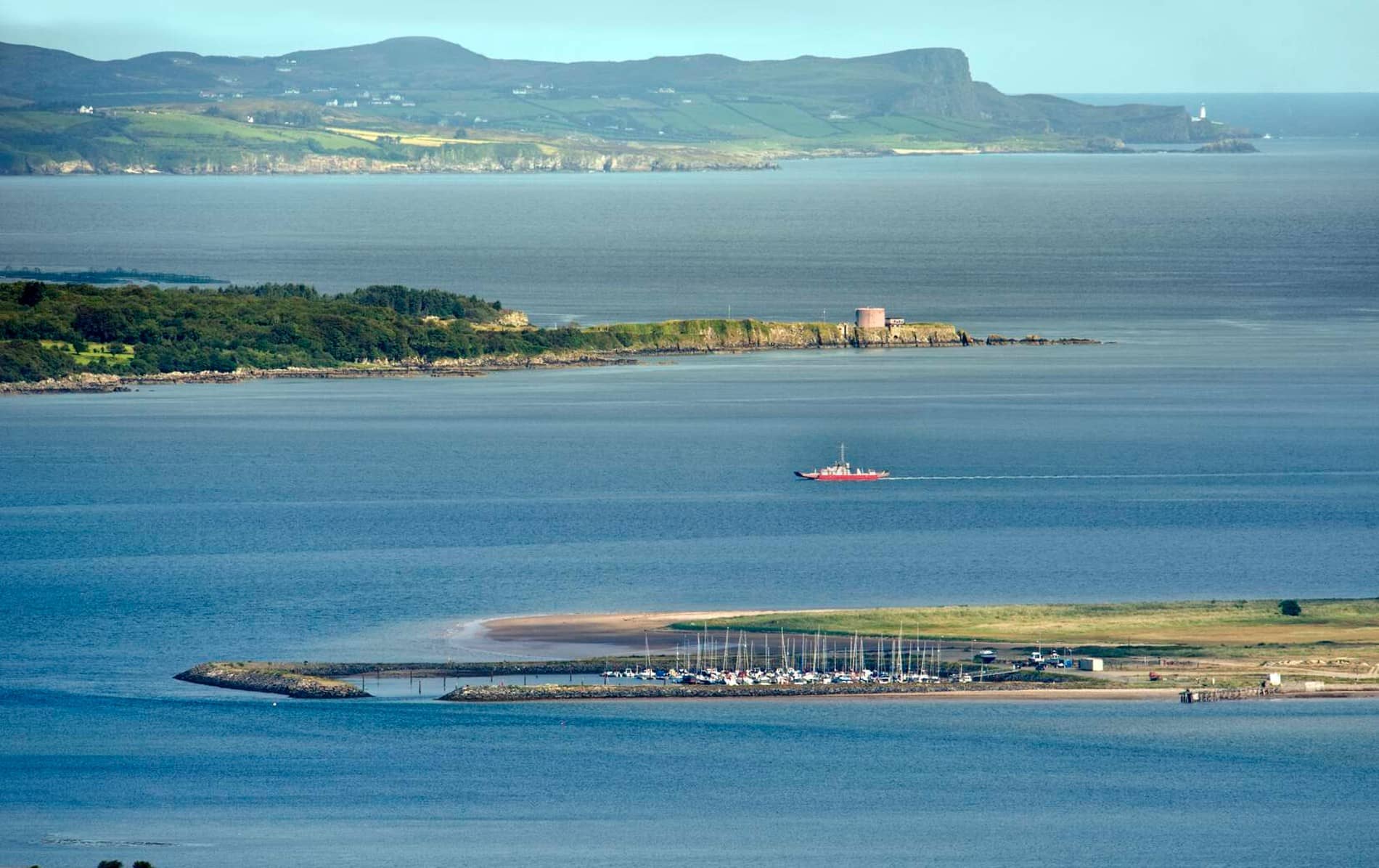
Once you step off the bus, it takes less than five minutes to walk to the Amazing Grace Viewing Point. Looking out over the stillness of Lough Swilly, it's easy to imagine how welcome a sight this would have been to John Newton, the slave trader who anchored here in 1748 after sailing through a ferocious storm on his return across the Atlantic to England. So grateful was Newton to escape death that he stepped ashore a changed man, devoting his life to the abolition of the slave trade — and writing the lyrics to that beloved hymn, Amazing Grace.
2 km
Beach living
Castle Bridge, Buncrana

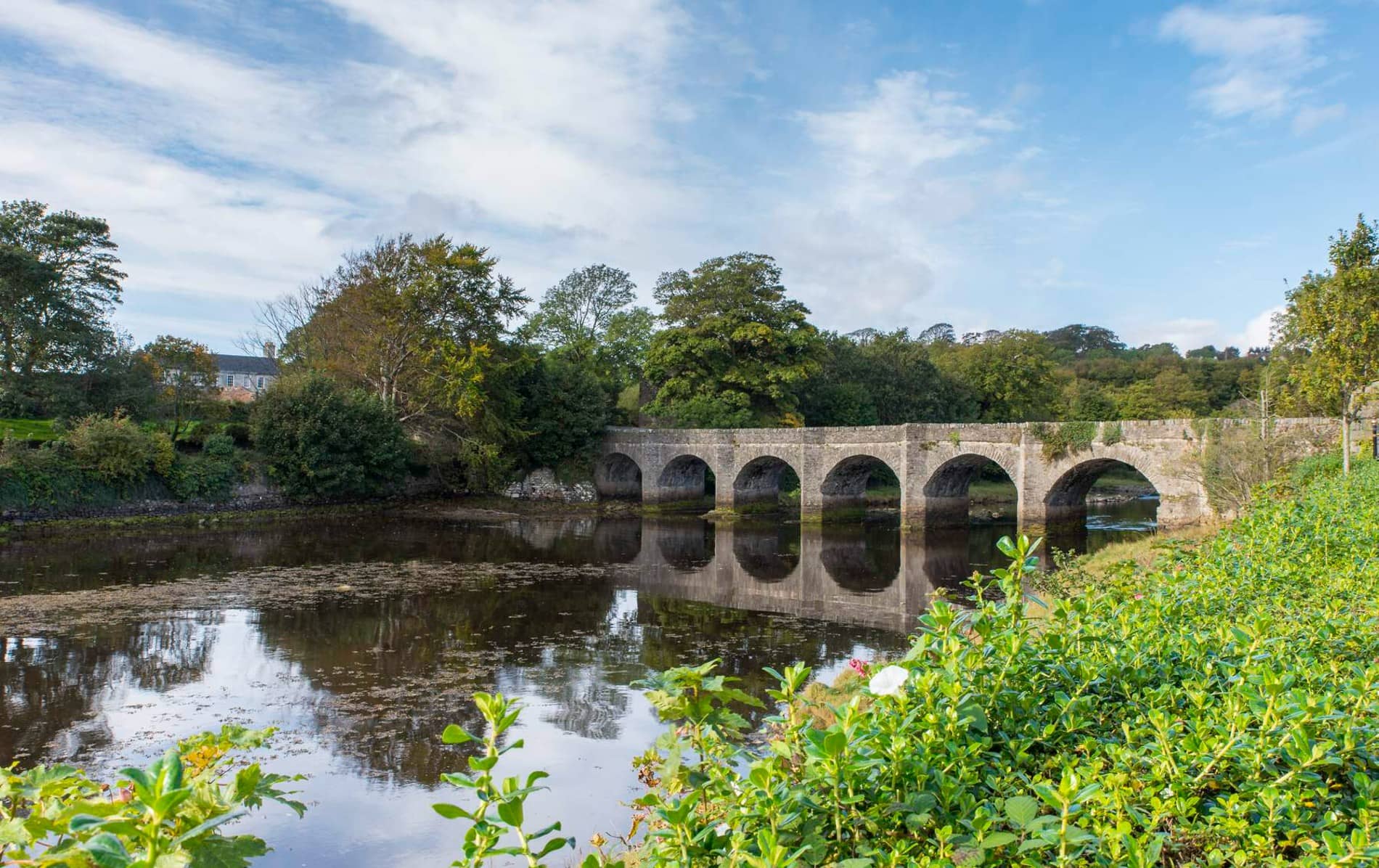
Just up the road is pretty Swan Park, the starting point of the Buncrana Coastal Walk. From here, you can stroll over Castle Bridge to Buncrana Castle, an 18th-century manor house that whispers of the grandeur and glory of bygone times; before continuing west to Ned's Point Fort, a Napoleonic battery built to defend the north-west against the threat of French invasion. Following the path on the seaward side, you'll soon reach the sandy expanse of Porthaw Beach. Serene and secluded, dotted with sea pinks and sturdy coastal grasses, this is just the spot to sit down, rest your feet and maybe even go for a paddle.
If you have more time, visit the Northern Light Gallery and Studio and take a piece of the north-west home with you through Adam Rory Porter's beautiful photography, fine art prints and canvases.
20 km
Winding down for the night
Buncrana Beach

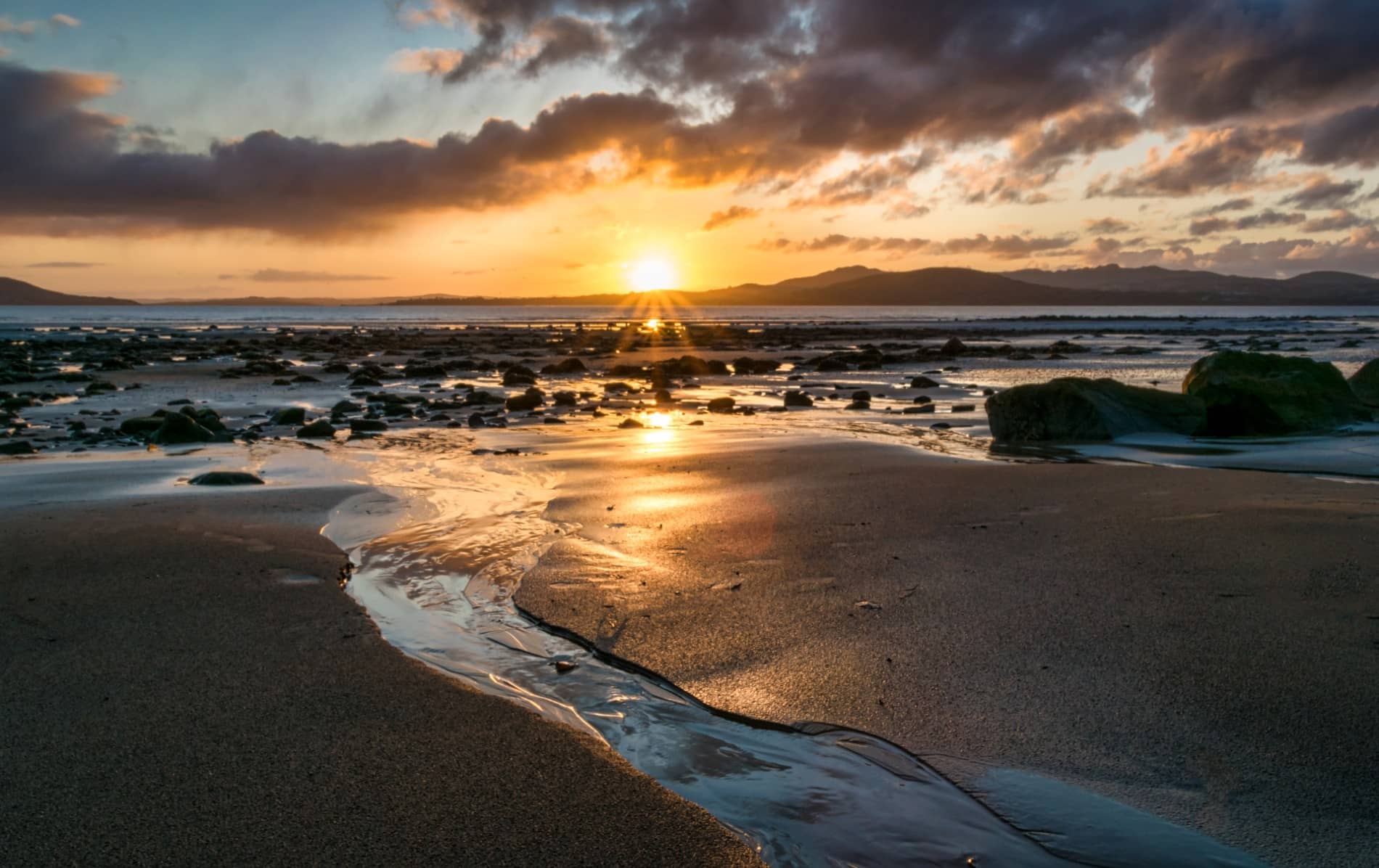
Popular among locals and visitors alike, O'Flaherty's Bar on Buncrana's Main Street is the place to be around these parts! You're likely to catch some live music here on any given night, and as one of the best-loved family-run pubs in the area, you'll no doubt run into some lively local characters too — watch out for Coco, the six-foot gorilla who guards the entrance…
Before turning in for the night, you can't miss a sunset stroll along Buncrana Beach. Clean, soft sand and uninterrupted views across the water make this an idyllic place to watch the sun sink behind the hilly western banks of the lake. Then it's a quick taxi back to your accommodation: the beautiful Ballyliffin Lodge & Spa Hotel and cosy Butterbean B&B are both under half an hour from Buncrana, and just a few minutes from your first destination in the morning.
If you have more time, dine at the Drift Inn, in the old Swilly Railway Station building, and enjoy fully traceable, locally sourced food surrounded by panoramic views of the lake.
13 km

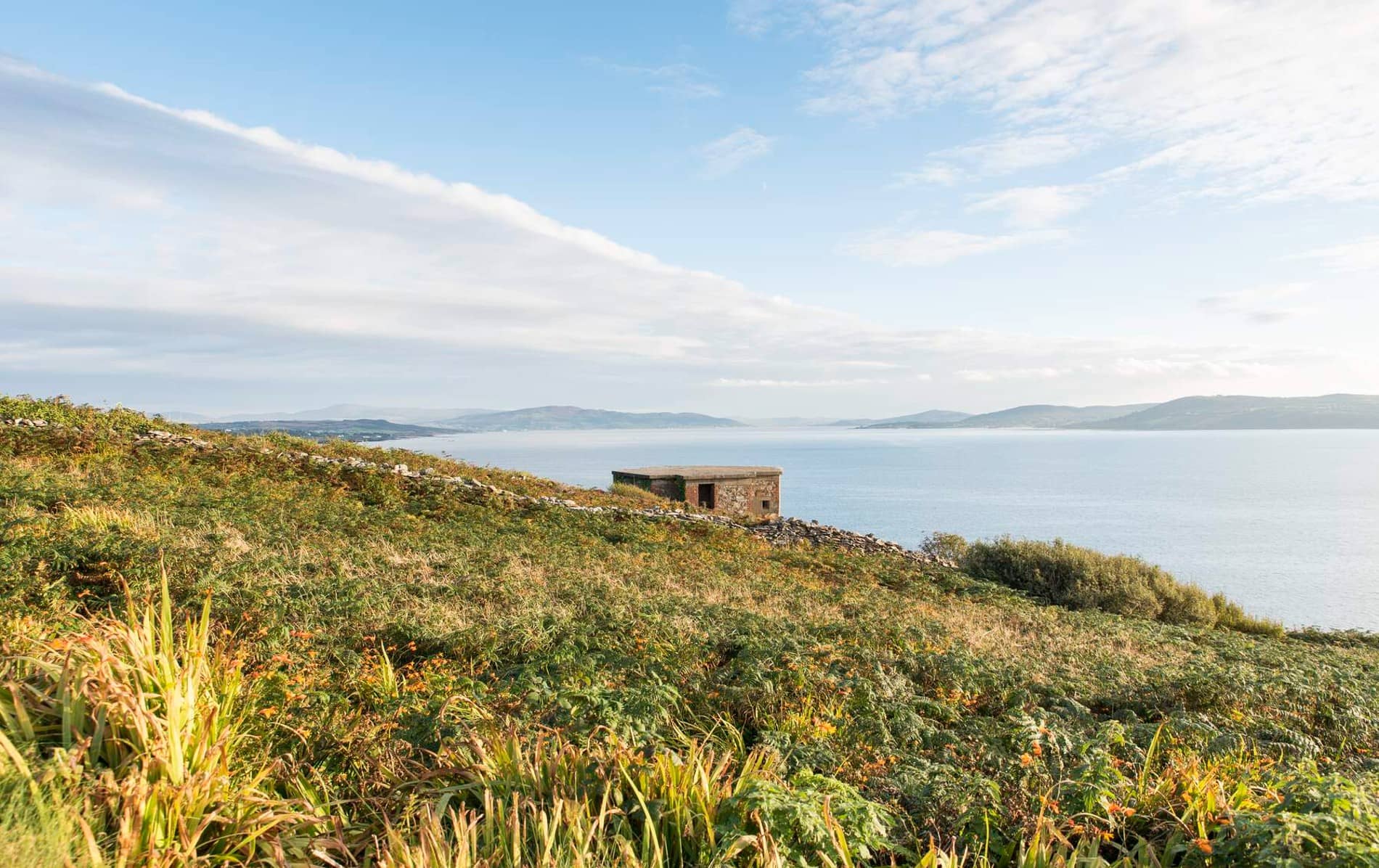
Day 3
County Donegal is the kind of place that makes you wonder why people live in cities when nature looks like this…
Explore Day 3Look to the mountains
Glenevin Waterfall

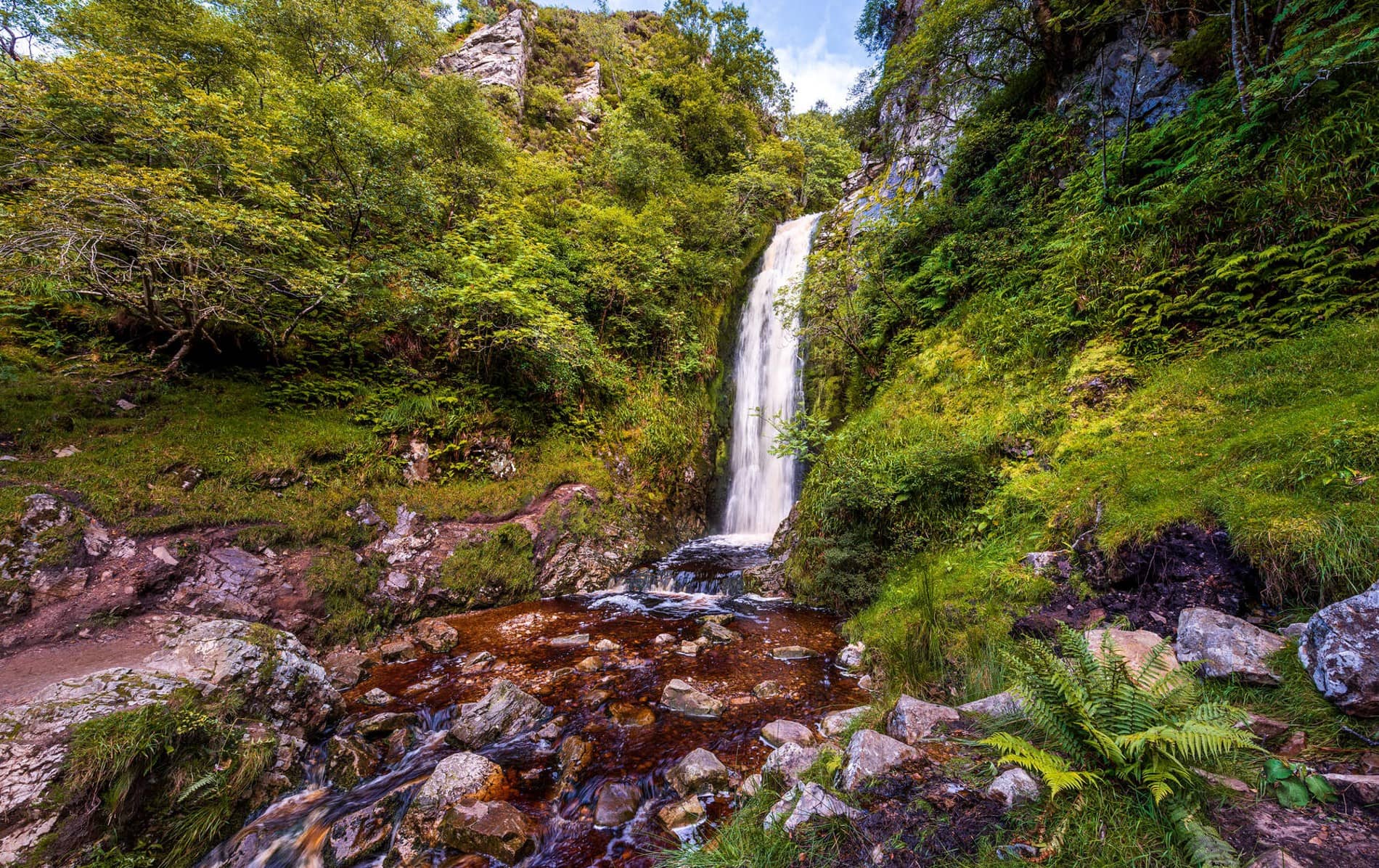
Starting your last day in County Donegal bright and early, you can take a short bus journey on the 951 from the Butterbean B&B straight to Clonmany, or grab a four-minute taxi from Ballyliffin to Clonmany. This charming little village is surrounded by four mountains: Bulbin, Raghtin Mór, Binion and the mighty Slieve Snacht, which towers over the others at 2,019ft. The hike to the top can take up to four hours; but to the south of Clonmany is a much gentler wooded valley trail, which leads to Glenevin Waterfall. Like something from a picture book, this is a dream spot in which to enjoy a picnic. Just make sure you can resist the temptation to jump under the falls for an icy shower!
12 km
Guarding the coast
Fort Dunree

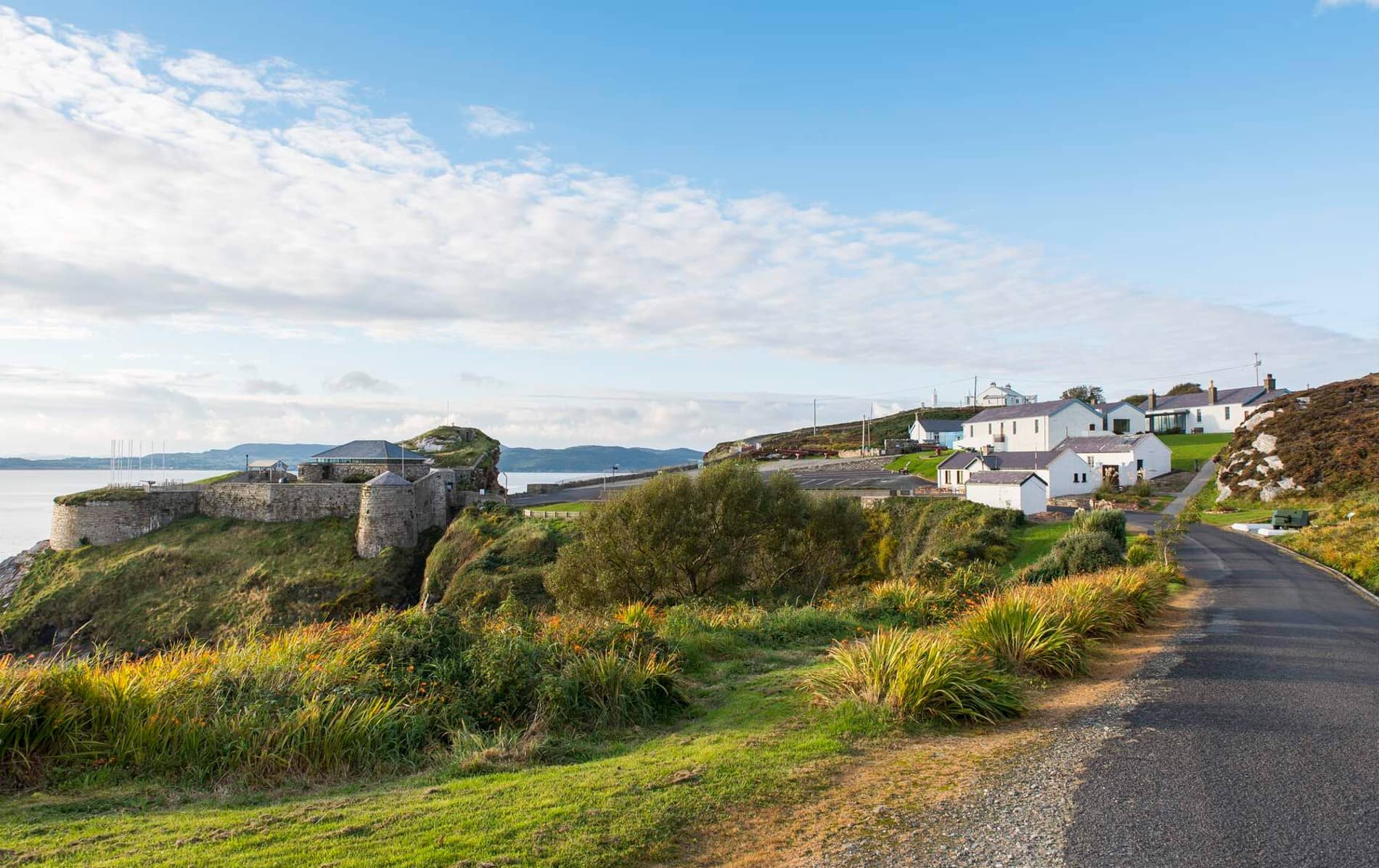
Back in Clonmany village centre, the 955 bus will take you straight to Fort Dunree. Perched on a cliff overlooking Lough Swilly, the fort as it stands now was built as a defensive settlement in the 19th century; but Dunree Head itself has overseen invasions as far back as the arrival of the Vikings. Check out the museum while you're there — you can even descend into the underground bunkers for a poke around.
If you have more time, visit the ice-cream parlour at The Glen House B&B for a mid-morning treat!
21 km
A history of hardship
Doagh

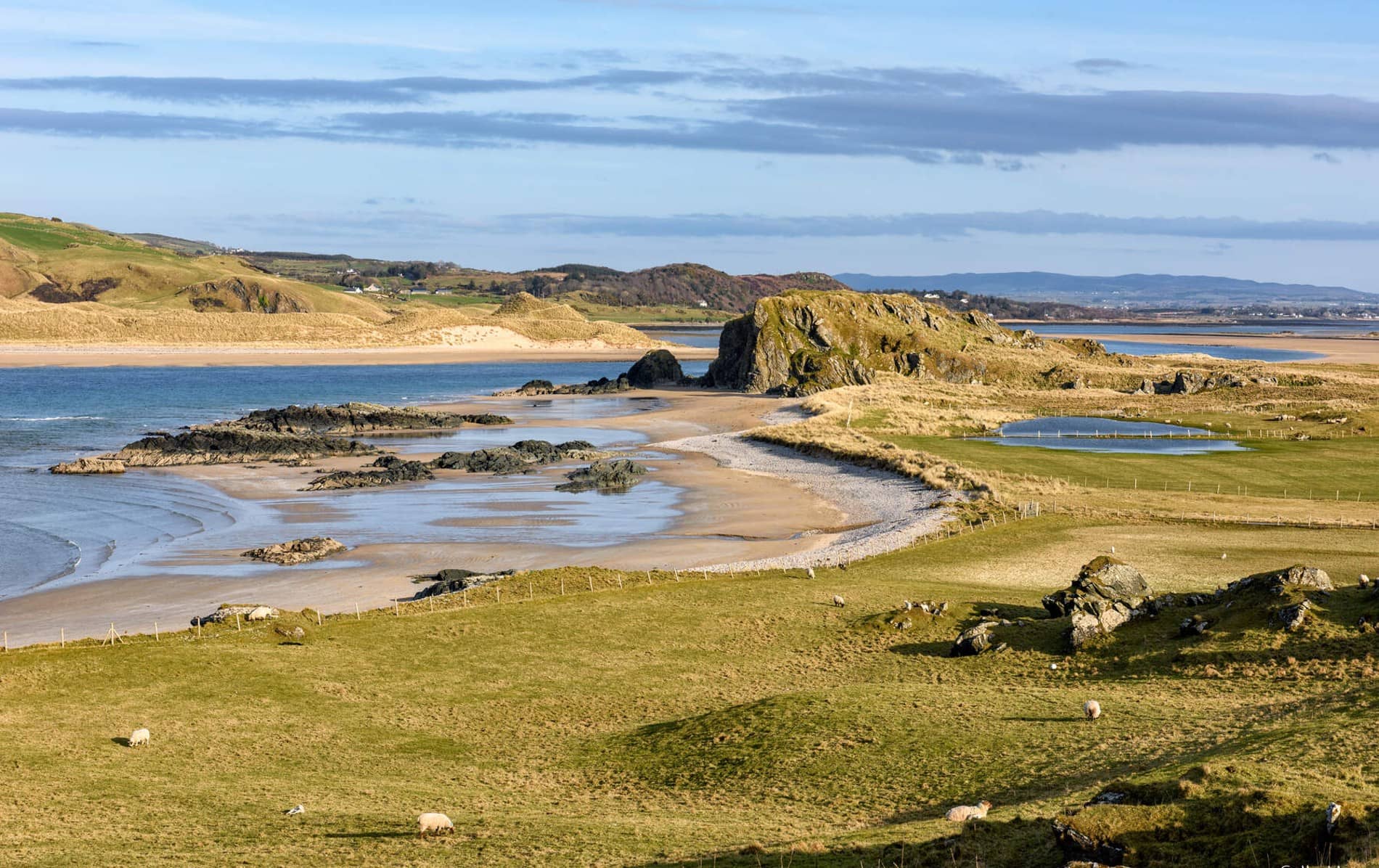
Back on the 955 bus, this time you're travelling north to the Doagh Famine Village. When the Great Famine descended on Ireland in the 1840s, the destruction was unimaginable: one million people died, two million more emigrated and it changed the course of the island's history forever. The Doagh Famine Village tells this story with sensitivity and expertise, guiding you through the devastation and the renewal of the island throughout the generations, right up to this day. Tours run from March to October and include the chance to step inside a real thatched cottage, which was inhabited by the same family from famine times up until 1983.
9 km
Fisherman's paradise
Nancy's Barn, Ballyliffin

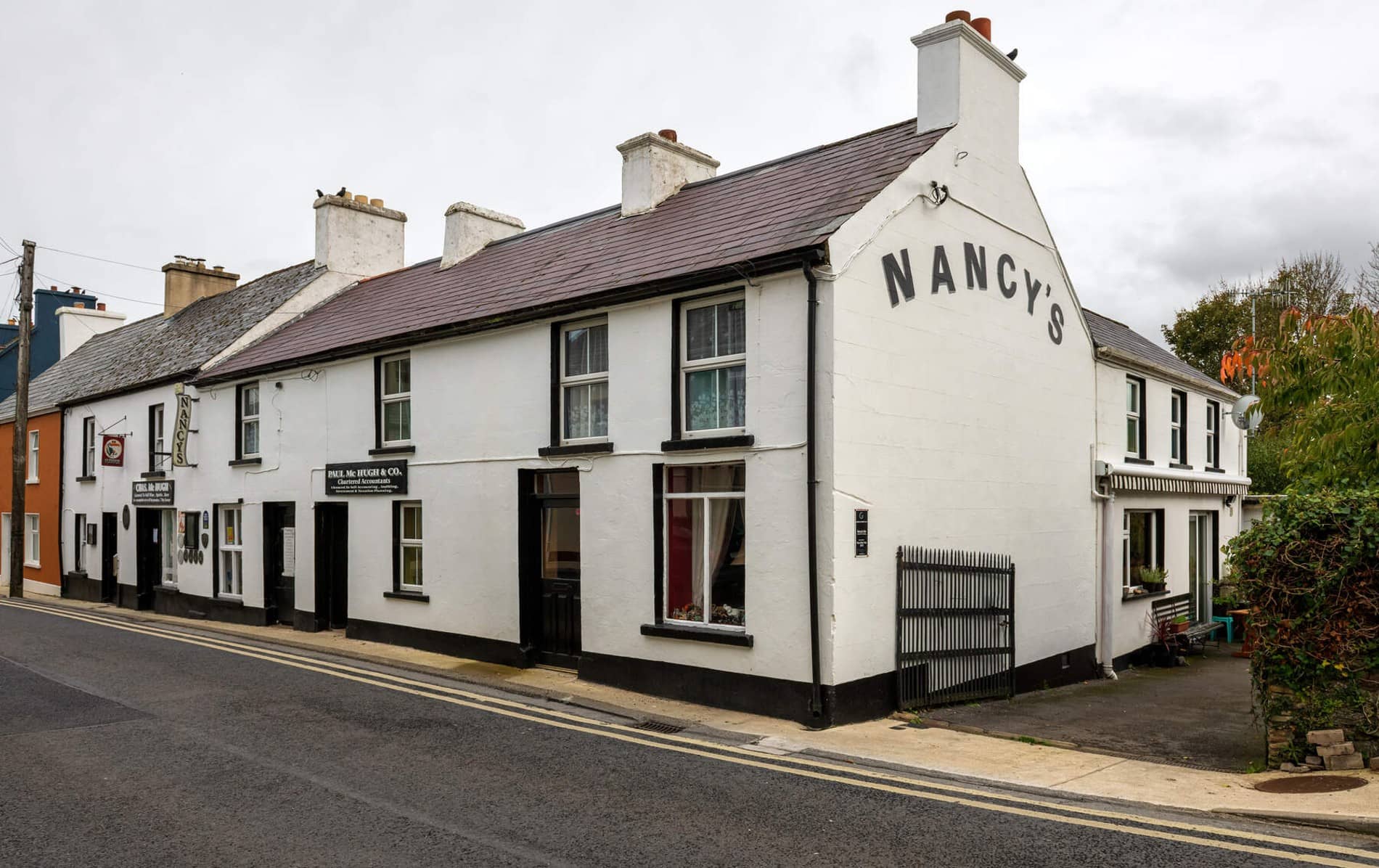
Just beyond the Famine Village, Trawbreaga Bay spreads before you, a wonderful expanse of wide open sky and soft waves breaking on golden sand. Known locally as The Nose, for the hook of land that curves inward at the mouth of the bay, this is where people in times gone by used to sprinkle potato in the water to attract the fish, before catching them as they swam to shore. It remains a popular fishing point to catch everything from cod and mackerel to halibut and haddock.
Back on the 955 bus to Ballyliffin village, book your table at Nancy's Barn, which boasts a famous seafood chowder that's bound to hit the spot after a day spent seaside!





